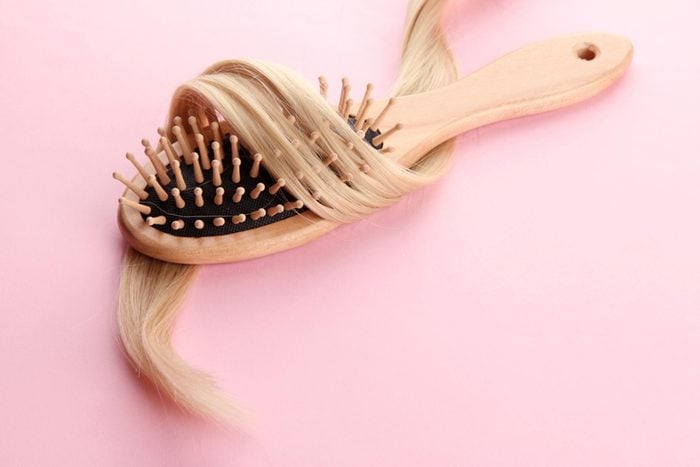
Not cleaning your brush
Your hairbrush can be a breeding ground for all sorts of bacteria, particularly if you utilize styling products on a regular basis. The build-up of dust and stale product remnants will make for one clogged instrument that will transfer itself into your clean locks. According to Steve Lococo, hair stylist and co-owner of B2V Salon, “It may seem like common sense, but people often brush their hair with a dirty brush. The build up of oil and dirt will cause even freshly washed hair to appear greasy.” Make sure to clean out the bushel of hair on your brush at least once every few days and sanitize the bristles with a mild cleanser.
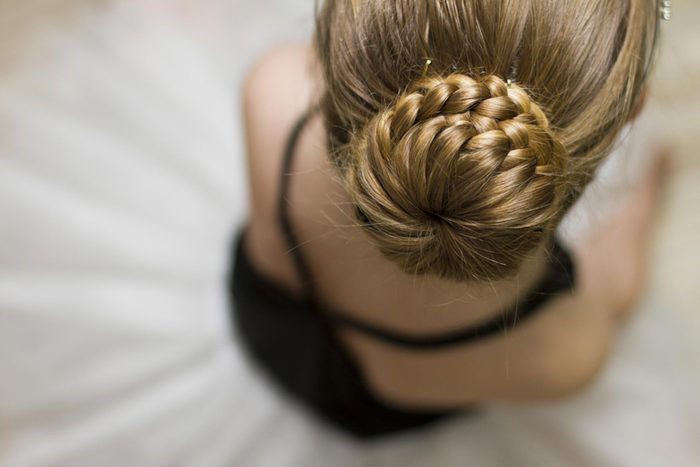
Wearing your hair up at night
If you’re prone to tying your hair up at night to avoid tangles, you might want to reconsider. “When you tie you hair up at night, all of your natural oils becomes concentrated at the scalp,” shares CJ Dougherty, a Gordon Salon Master Hair Designer and Aveda Cutting Coach. “This prevents the oils from working their way the whole hair strand leaving hair looking greasy near the root area.” Try showering in the morning instead or investing in a great hairbrush; this is how to find the best hairbrush for your hair type.
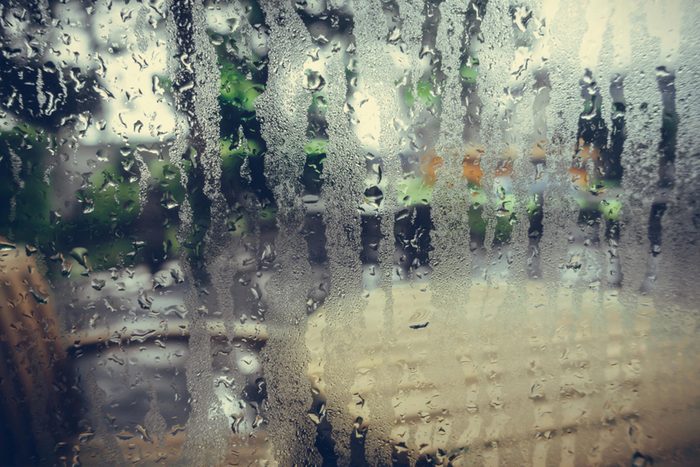
Humidity
If you are stuck in a geographical area known for high humidity, there’s unfortunately not much you can do to control Mother Nature’s stubborn ways. Environmental factors can cause physical appearances like skin and hair to take a toll, but there are ways you can improve the look of oily hair. According to Amy Kimball, senior artistic director at Supercuts, “We’re in Florida where it’s hot, humid, and we’re sweating all the time, which can cause oil to build up faster on the hair then in cooler climates.” In this case, try purifying scalp cleansers to help counteract and balance sebum levels.
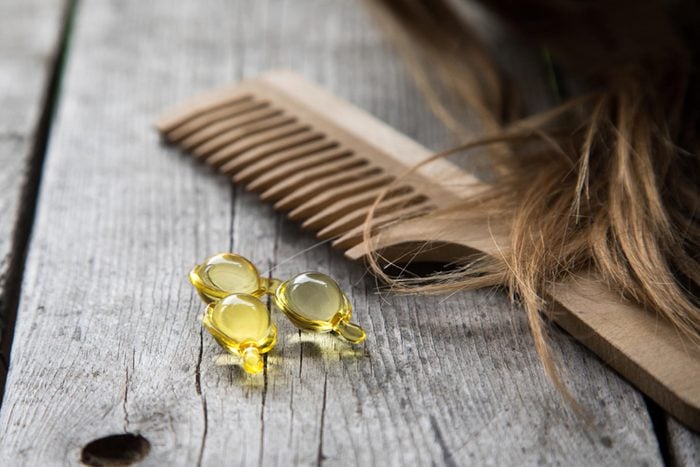
Using shine serums
We get it—shiny, glistening hair is great. But there’s a fine line between glossy and greasy, and one must handle it with extreme caution. While you may think that your looks look lustrous, your coworkers might just assume you haven’t showered in a few days. According to Kimball, “Shine serums are really popular right now, but if you rub them in near your scalp where there’s already a lot of oil, your hair could look very greasy. To prevent this, concentrate the serum towards the middle of your strands and then down to the ends. This will give the hair luxurious shine, without the greasy roots.” And try these 13 other tips for shiny hair.

Touching your hair too frequently
While it may be satisfying to push your hair back or touch your scalp during the day—flirtatiously or habitually—doing so can easily transfer the oil from your hands to your roots. According to Kristina Maccaro, co-owner and creative director of Love Lane Salon, “Constantly touching your hair—just like your face—transfers oils from your fingertips and hands to your hair strands. Try braiding your hair or pinning it back to keep it out of your face if you are prone to fiddling with your locks all day.”
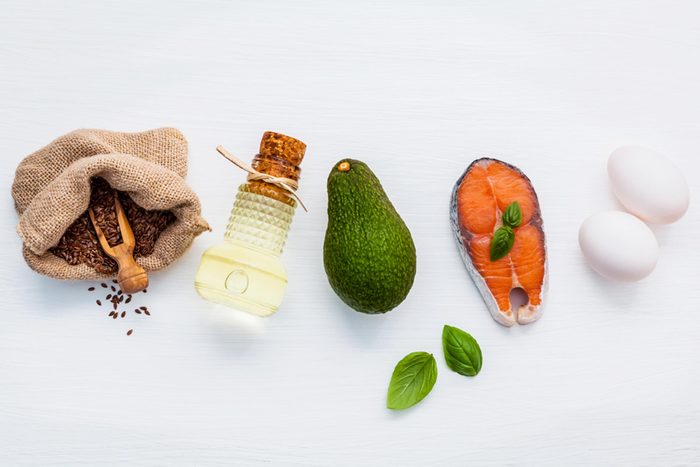
Lack of vitamin B
Everything is connected when it comes to your body, and that includes what you put in it. If you have a vitamin deficiency, your skin and scalp can take a toll. In particular, the intake of B vitamins is directly linked with your level of sebum production. According to Lococo, “Vitamin B, such as biotin, affects panthenol and sebum levels, which helps hair stay healthy and shiny. You need vitamin B to feed the hair follicles properly. A common mistake is that people treat greasy hair and don’t understand that they may actually be dealing with a sebum imbalance.” Increase your consumption of vitamin B2 (riboflavin) and vitamin B6 (pyridoxine), both of which can assist in regulating sebum production. And add these healthy hair foods to your diet for the most lustrous locks.
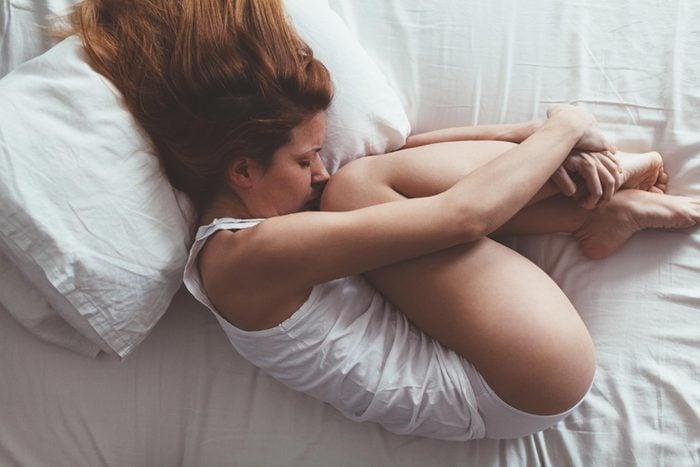
Hormonal fluctuations
As if monthly menstruation didn’t already spark enough turmoil on our appearance, hormonal fluctuations can incite those oil glands to go into active overdrive. The week before your period, referred to as the “luteal phase,” causes your estrogen and progesterone levels to rise significantly. According to Natè Bova, senior stylist at Warren-Tricomi Salon at The Plaza in New York City, women will likely experience changes in skin and hair during this time. “Then, as a woman approaches her period, levels of androgen hormones (like testosterone) rise as estrogen hormones fall. This leads to a surge in sebum (oil) production. Because your face and scalp are particularly rich in oil glands, the effects become more apparent in those areas.” Keka Heron, celebrity hair stylist, agrees: “Your hormones being out of balance can lead to a greasy hair and scalp. Hormones become out of balance due to genetics, medications, and temporary conditions such as pregnancy and other environment changes/factors.” Try using a salicylic acid shampoo during that time of the month to help remove excess oil from the scalp. Be on the lookout for these 15 other surprising things that happen during your period.

Using the wrong products
Spending a few extra minutes next time you’re at the hair care aisle might be a good investment. Although your favorite shampoo might be great for its fruity scent, it could unintentionally be making your hair extra greasy if it’s oil-based. Andre Walker, Oprah’s hairstylist for 30 years, cites overuse of incorrect products as a major miscreant that can cause build-up for overly sebaceous glands. Carol’s Daughter style squad member Stephanie McLemore agrees, “Product selection could be the issue when it comes to greasy hair. Search for hair products that offer petroleum free, mineral oil free, sulfate free, and no artificial colors. When it comes to styling your hair, be sure to apply products to the hair strand and sparingly on the scalp if needed. The excess oil from the scalp will naturally travel from scalp to ends.” If oil-based products are giving you trouble, try a cream based product instead for all that shine without the grease. Here’s how to find the best shampoo for your hair type.
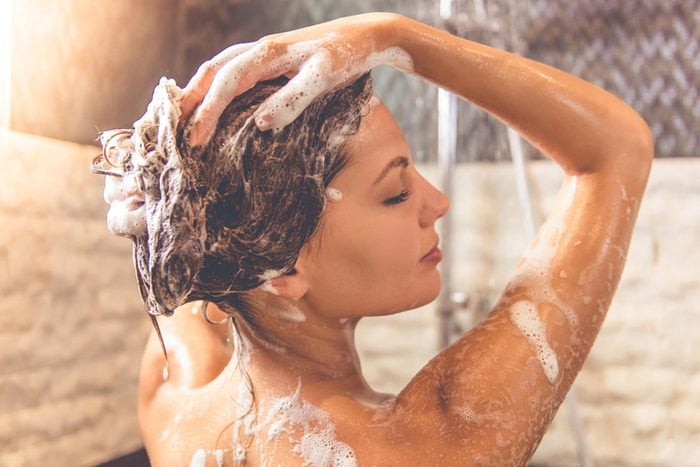
Overshampooing
Shampooing too frequently can spark a vicious cycle and tolerance level that mandates excessively frequent washes. While jumping in the shower may be the logical thing to do when you first notice greasy roots, doing the opposite and taking a step back might actually be the proper solution. Hear us out—according to Miranda Mendoza, beauty blogger at slashedbeauty.com, “It may sound counterintuitive, but washing your hair too much can actually make it greasy. Every time you wash your hair, you’re stripping the natural oils from the scalp. In response, your body starts trying to compensate by putting oil production in overdrive. If you struggle with greasy hair, try skipping a few days of washes. It’ll get worse before it gets better, but the balance will come! Get through the rough transition with updos like topknots or braids.”
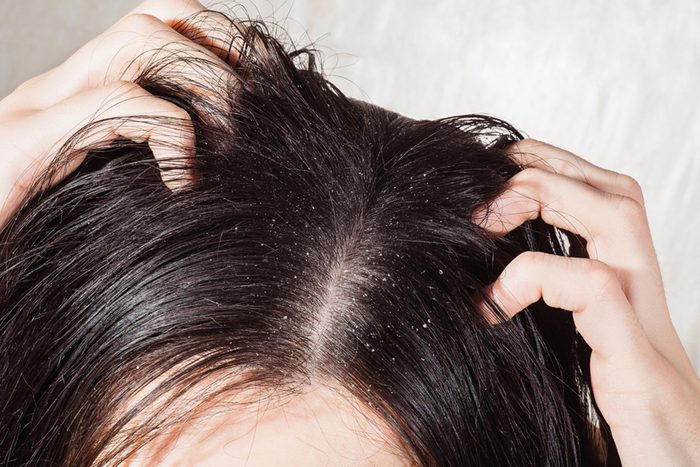
Dandruff
You might assume that scalp problems like dandruff or scalp psoriasis equates to dry locks, but these conditions could mean oilier roots—and even be the cause of your flaky situation. When your scalp produces an excess of oil, it can also incite an overgrowth of yeast, which in turn sparks inflammation and flaking. According to Bova, “If the dandruff sits in the scalp, there is a chance that the follicles and pores can be clogged, causing an overproduction of sebum from the scalp resulting in whiteheads. Make sure you use a deep cleansing shampoo with tea tree oil to keep the scalp and pores clean.” Seborrheic dermatitis can also be associated with excessive sebum production, which will reap itself by scaly skin. If this is the case, dandruff shampoos can help cure the issue, but don’t shy away from reaching out to your doctor if the condition doesn’t improve. Lococo highly recommends seeing a hair care professional to determine if you are dealing with an oily or dry scalp; both can culminate in greasy roots so its important to understand exactly what you’re dealing with.